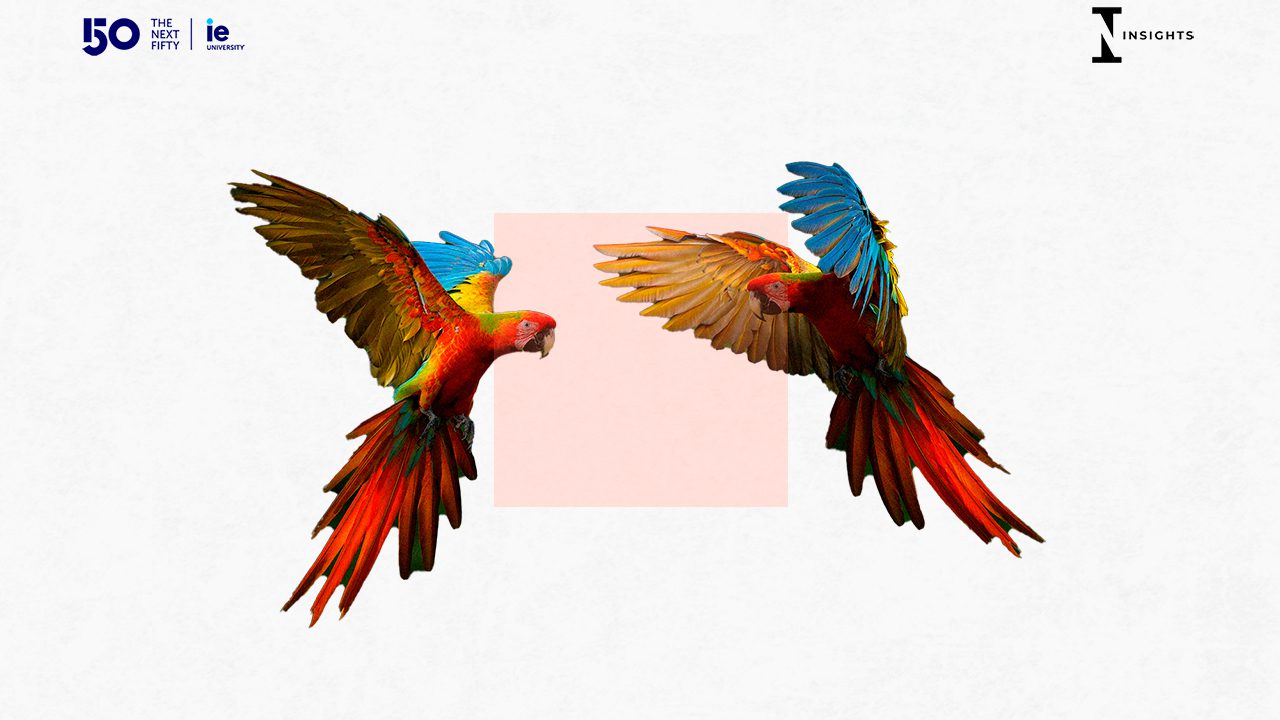Link copied
IE insights - IDEAS TO SHAPE THE FUTURE - Society

Our Wild Future
Collaboration will be key to the survival of endangered wildlife and human beings alike.
Our future is intricately linked to the planet’s health and the wildlife we share with the Earth. Disruption of this balance is reaching a tipping point as one-quarter of all mammals are threatened with extinction. People and domestic animal populations are exploding and encroaching on the space our wildlife needs to survive. Today, humans and livestock comprise 96% of all biomass on the planet, and wildlife only 4%.
As the climate changes and people’s movements amplify, the disruption of the landscape and the pathogens we share is having global consequences – for example, COVID, Ebola, and SARS. A global pandemic has gotten our attention, and if we don’t act to change things soon, it will not just cause wildlife extinction but hurt our future existence.
Humans currently share more than 75% of new and emerging infectious diseases with animals. In order to stay healthy, we must be sensitive to how our patterns of disrupting the natural world can wake benign microorganisms into lethal pathogens. Front-line investigators need the resources to identify these pathogens before they spread over the planet. Unfortunately, these efforts barely exist, and most resources are targeted to patch the problem, as in creating a vaccine, rather than investigating the problem at its source.
As a wildlife veterinarian, I have witnessed devastating wildlife die-offs. I have seen herds of bighorn sheep lie dying on the landscape, gasping their last breath from pneumonia caught from a neighboring domestic sheep herd, a normal pathogen for the domestic sheep but wiping out 90% of their wild cousins. Wildlife are vulnerable to domestic animal diseases, particularly when the pressure of domestic animals grows around forests and pastures of wildlife preserves. On a global scale, some of our most beloved wildlife have been decimated by diseases that people and domestic animals have spread to them. Pathogens like the common cold in the great apes, dog’s parvovirus in wolves, and canine distemper in lions are a few examples of many that have reduced the numbers of wildlife and weakened vulnerable populations from reproductive recruitment.
Wildlife health is a vital part of the conservation toolkit needed to not only save our most critical species but also to improve the health of the people and domestic animals that surround Nature Preserves, and the global community in which we are all linked. Endeavors like mine, (the Veterinary Initiative for Endangered Wildlife) help conservation efforts build sustainable wildlife health programs. For example, over ten years ago, Nepal set out to double the number of tigers, one of the most critically endangered animals on the planet. Through government policy, concerted local and international conservation efforts, soliciting community involvement, and including wildlife health, Nepal is now the only country to achieve this outstanding goal. It takes a village, locally and globally, to achieve such success.
We already have the tools in conservation, medicine, technology, and education to make the changes to improve the survival of these species. What we need to do now is support these efforts wholeheartedly – because in the next 50 years, the collaboration and efforts of governments, individuals, communities, and international collaboration will become even more crucial for the survival of endangered wildlife, and the survival of our own well-being.
© IE Insights.
